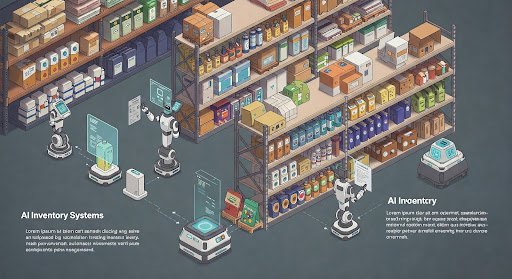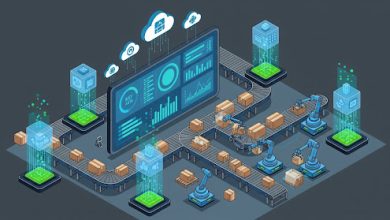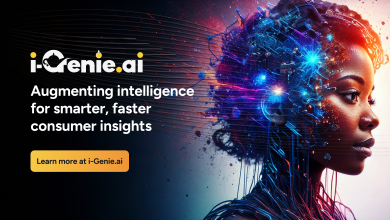
When a school backpack doesn’t arrive before the first day of class, or when essential medical supplies are out of stock, who do we blame? Often, it’s not the store or the supplier. It’s the system.
In a world where e-commerce drives nearly every aspect of daily life, empty shelves don’t just signal inconvenience, they disrupt routines, reduce trust, and in critical cases, endanger lives. Whether it’s insulin not reaching a pharmacy or a grocery chain missing fresh produce deliveries, the underlying cause often traces back to one quiet force: inventory intelligence.
Despite all our digital advances, global supply chains remain surprisingly fragile. The IHL Group estimates over $1.1 trillion is lost each year due to out-of-stock situations, and $626 billion from overstocks. Behind these numbers lie countless daily moments of frustration and risk for consumers. As retail giants struggle to find the delicate balance between overstock and stockout, artificial intelligence is quickly emerging as the industry’s lifeline.
And at the heart of this shift is Swagata Ashwani, a data scientist whose work is quietly transforming how inventory is managed on a planetary scale.
From Firefighting to Forecasting: The Shift That Changed Everything
When Swagata joined one of the world’s largest online retailers, she wasn’t just asked to tweak spreadsheets. She was brought in to fix something broken, something that left the company vulnerable every time demand spiked or delivery lines faltered.
“I could see that every manual process meant hours of human firefighting,” Swagata recalls. “We had supply chain managers constantly chasing errors, by the time they found a fix, the customer had already walked away.”
Her challenge was enormous. With millions of SKUs spread across dozens of countries and fluctuating demand patterns influenced by weather, social trends, and global events, traditional forecasting models were outdated the moment they were run. Not only was the company spending excessively on warehousing surplus, but it also lost sales every time critical items ran out.
Building Intelligence Into Every Decision
Swagata’s response was methodical, and radical. She developed a multi-layered machine learning framework that blended deep learning with time-series forecasting to predict demand more precisely than ever before. Rather than building a new system from scratch, she created something smarter: an AI-powered model that could integrate directly with the company’s existing ERP systems, minimizing disruption and maximizing adoption. But what made her solution stand out was not just the algorithms, it was the empathy built into its design.
She introduced a Natural Language Processing (NLP) component that flagged and categorized inventory anomalies in real-time. Instead of warehouse managers sifting through spreadsheets or waiting for alerts, the system could immediately tell them what was wrong, where, and why. “The idea was to make the data speak,” Swagata explains. “I wanted every stakeholder, from a warehouse floor staffer in Ohio to a procurement officer in Manila, to understand the issue and act on it immediately.”
People Over Process: Real-World Outcomes That Matter
The results were not incremental, they were transformational.
- Inventory holding costs fell by 20%, freeing up capital to invest in faster deliveries and new customer experiences.
- Demand forecasting accuracy rose by 15%, allowing for smarter restocking and fewer shortages.
- Manual inventory corrections dropped by 17%, meaning fewer late-night emergencies for staff and less human error in the system.
- Most importantly, stockouts were reduced by 12%, real-world moments where customers got what they needed, when they needed it.
Behind each percentage point lies a real impact: A parent getting baby formula delivered on time. A student receiving a laptop before exams. A rural clinic never runs out of essential bandages. This was no longer just supply chain optimization. It was consumer trust restoration at scale.
Beyond the Warehouse: Environmental and Social Impact
Swagata’s work didn’t just make business sense, it aligned with broader social and environmental goals.
By optimizing stock levels and reducing over-ordering, the company saw a decrease in waste from expired or unsold goods. Fewer emergency freight shipments meant lower carbon emissions. The increased automation also meant employees could shift from repetitive corrections to higher-value planning work, improving morale and reducing burnout. In a time when businesses are being held accountable for sustainability and ethical logistics, these ripple effects are more important than ever.
A New Blueprint for Global Resilience
When the COVID-19 pandemic hit, the cracks in global logistics systems widened. Swagata’s forecasting model, already in place, allowed for rapid rebalancing of inventory, helping ensure that essential goods like PPE and home health devices reached the people who needed them most. This wasn’t just a business win, it was an act of readiness in a moment of global vulnerability.
As more companies explore AI to de-risk their supply chains, Swagata’s success provides a replicable framework, one that combines advanced data science with systems thinking and a people-first mindset.
The Road Ahead: Smart, Sustainable, Human-Centric
Today, Swagata’s model is influencing how other teams think about logistics automation. Her work has spurred new research into multi-market, real-time supply chains that adapt not just to consumer demand, but to climate impacts, local disruptions, and economic shifts.
“AI should never be a black box,” she says. “Its power lies in clarity, helping people make better decisions, faster, with confidence.”
With people like Swagata leading the charge, inventory intelligence is evolving from a back-office function to a front-line force for resilience and sustainability. The shopping experience improves. The planet breathes easier. And every warehouse becomes just a little bit smarter, and more humane.




